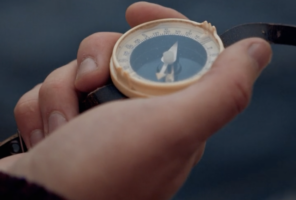Sharing Knowledge: Lessons Learned on UX Project
Every company has values and guiding principles. They often sound great, and they're usually used to get an edge in marketing and sales. They're prescriptions about how and what an organization or individual will do in a given scenario. But do people really know what every scenario will look like?
I open with that framing, as this piece will travel a similar path: rote descriptions about exactly how and when to ply our craft as designers and software engineers suffer the same problem. We can theorize all we want, but eventually it's praxis time.
At SPR we have a cardinal virtue: deliver beyond the build. It's supported by other virtues, two of which I want to focus on here: Natural Knowledge Sharing and Deep Understanding. They sound great, right? But what do they look like?
The challenges
A longtime client – who we've assisted with custom development, research, and DevOps work – engaged us to help with a portal redesign effort. The company brought us in to help them navigate major organizational and personnel changes. Almost immediately, we recognized these key challenges:
- The organization was undergoing a significant amount of change
- Our client team members were not as familiar with SPR due to a lack of history and prior knowledge of the product in question
- An unclear picture of our client’s customers, their journey, and their needs
Here’s how we addressed these challenges.
Challenge 1:
Navigating change

Challenge 1:
Navigating change
Large scale change tends to fracture an organization. The information you need to take action, and the people who can help you acquire it, are typically scattered across all sorts of priorities. SPR devised a process to address this by first organizing the combined team around the problem space. What is it we need to solve and what is the minimum amount of information this team can generate to get us started?
Once we had accomplished that, we set out to iteratively build on our understanding. This took the form of an ever-evolving prototype that we shared with our growing list of customers and stakeholders. As we progressed, we incorporated feedback and sharpened the picture into greater focus. This in turn helped us understand what aspects of the product we were working on were truly worthwhile and valuable.
Challenge 2:
Lack of history with SPR or with the product

Challenge 2:
Lack of history with SPR or with the product
While SPR had worked with this client extensively over the course of the last decade, we had not worked with this specific team. Additionally, the team was effectively all new hires; while some on the client side had been with the company for many years, they had never worked together or worked on this product before. Immediately, we recognized the need to focus on building trust in order to make the engagement successful. We instituted a process whereby we shared, in whatever form we had, everything we were learning. Two times a week we would meet with the client team and teach them what we had learned, why we thought it was important, and how it impacted our design efforts.
We collected and recorded everything, highlighting specific points of feedback, captured every interview, and jotted down the owner of every widget in the product we could find. As we learned, we immediately turned around and taught our client. The ever-sharpening picture, combined with constant learning checkpoints, led to the combined team feeling like all our light bulbs were coming on at the same time. This is what Natural Knowledge Sharing looks like.
Challenge 3:
Clearer picture leads to a new problem

Challenge 3:
Clearer picture leads to a new problem
As SPR dug to collect the knowledge our client needed and shared that knowledge at regular checkpoints, the team started to see there was something missing. We had set out to redesign a portal and came up with a prototype that solved some pressing user challenges. But as we continued with the engagement, we started to see that we were missing large, foundational aspects of our clients’ customers and their experiences.
Because we made learning together such a focus of the first phase of the engagement, the client looked to us to set the scope for the second phase of the project. We realized we didn't know enough about our clients' customers, so we shifted focus to doing deep, foundational research and creating an experience map. We highlighted the base customer journey, the contours of the marketplace, competitors, frustrations, suggestions, etc. All of which changed the way our client thought about the tool we were brought in to redesign, and all of which completely shifted their roadmap and the roadmaps of a handful of their other products. That's deep understanding.
Virtues in action
By thinking hard about our client’s real-world situation and focusing on how we can apply our virtues to the situation, we were able to:
- Help navigate significant organizational change
- Demonstrate a flexible work model
- Learn deeply about the problem at hand
- Understand more about the people who use their products and how the client team can best address their needs in the future
Every client is different; every engagement comes with unique challenges. How rewarding is it, then, to see these virtues play out in different scenarios. What will happen next?



